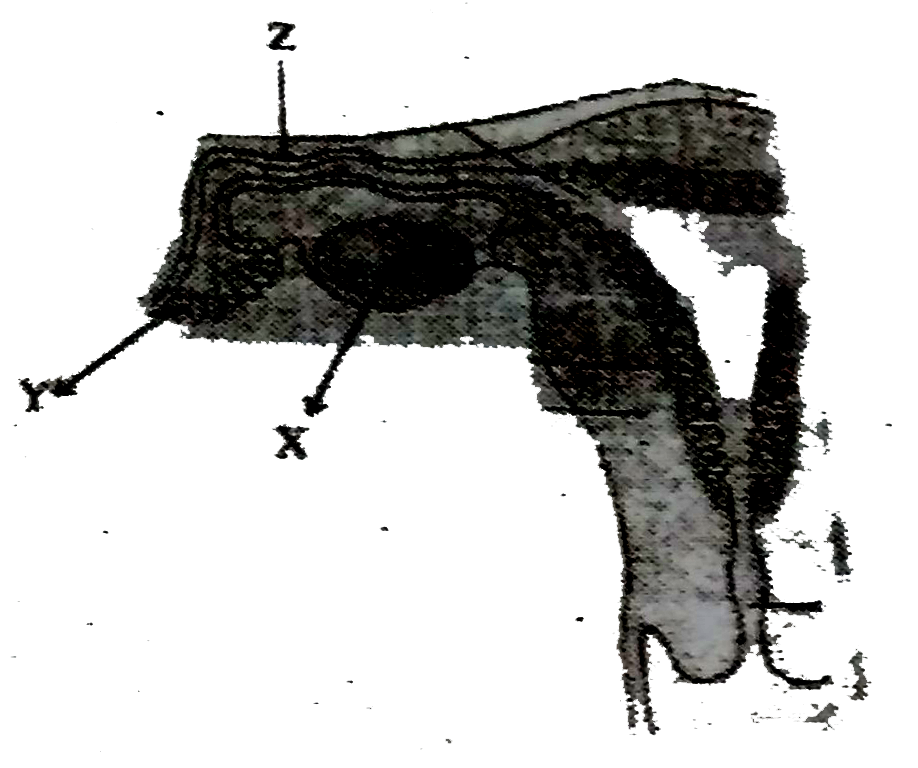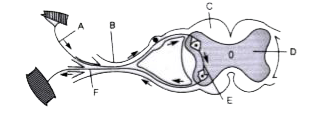(a) Write the reaction that occurs when glucose breaks down anaerobically in yeast.
(b) Write the mechanism by which fishes breath in water.
(c) Name the balloon like structures present in lungs. List its two functions.
(d) Name the respiratory pigment and write its role in human beings.
(a) Break down of glucose anaerobically in yeast
Glucose Glycolysis−−−−−−−−−→in the cytoplasm Pyruvic acid In the absence −−−−−−−−→ of oxygen2C2H5OH+2CO2+2ATP
(b) The fisher have special organs of breathing called 'gills'. The fish breathes by taking in water through its mouth and forces it past the gills, the gills extract dissolved oxygen from this water which is then taken up by the blood. The water then goes out through the gills slits.
(c) The balloon like structures present in lungs are called alveoli.
Two funcations
(i) The alveoli provide a surface where the exchange of gases can take place.
(ii) The walls of alveoli are covered by extensive network of blood vessels or capillaries in which oxygen from alveoli dissolves and are carried by the blood to the hear for pumping . In the same way, carbon dioxide from the body cells are carried by the blood capillaries to the alveoli from where it goes out of the body.
(d) In human beings, the respiratory pigment is haemoglobin which has a very high affinity for oxygen. This pigment is present in the red blood corpuscles.
Similar Questions
Compound X and aluminium are used to join railway tracks. (a) Identify the compound X (b) Name the reaction (c) Write down its reaction.
View Solution(i) Write structural formula of the compound formed when one mole of ethyne reacts with one mole of hydrogen gas.
(ii)Name the catalyst used in the above reaction.
(iii) Write temperature at which the reaction mentioned in (a) occurs.
(iv) Name the reaction.
View SolutionWrite the reactions of D-glucose which can't be explained by its open chain structure. How can cyclic structure of glucose explain these reactions?
View Solution(a) Name the organ that produces sperms as well as secretes a hormone in human males. Name the hormone it secretes and write its functions.
(b) Name the parts of the human female reproductive system where fertilization occurs.
(c) Explain how the developing embryo gets nourishment inside the mother's body.
View Solution(a) Mention any two components of blood.
(b) Trace the movement of oxygenated blood in the body.
(c ) Write the function of valves present in between atria and ventricles.
(d ) Write one structural difference between the composition of artery and veins.
View Solution
The above diagrams shows human male reproductive system (one side only )
(a) Identify 'X' and write its location in the body .
(b) Name the accessory gland 'Y' and its reaction.
(c) Name and state the function of 'Z'.
View Solution
The diagram above shows a part of the human female reproductive system.
(a) Name the gamete cells that would be present in 'X' if taken from a newborn baby.
(b) Name 'Y' and write its function.
(c) Name 'Z' and write the events that take · place here.
View Solution(A) Write the structures of A,B,C,D and E in the following reactions,

(B) Give balanced equation for the following name reaction : Rosenmund reaction.
View SolutionThe diagram given below is a representation of a phenomenon pertaining to the nervous system. Study the diagram and answer the following questions:

(i) Name the phenomenon that is being depicted.
(ii) Give the technical term for the point of contact between the two nerve cells.
(iii) Name the parts A, B, C and D.
(iv) Write the functions of parts E and F.
(v) How does the arrangement of neurons in the spinal cord differ from that of the brain.
View Solution
Study the diagram showing replication of HIV in humans and answer the following questions accordingly :
(i) Write the chemical nature of the coat A . (ii) Name the enzyme B acting on X to produce molecule 0 . N ame 0 . (iii) Mention the riame of the host cell D the HIV attacks first when it enters into the human body. (iv) Name the two different cells the new viruses E suibsequently attack.
View Solution
